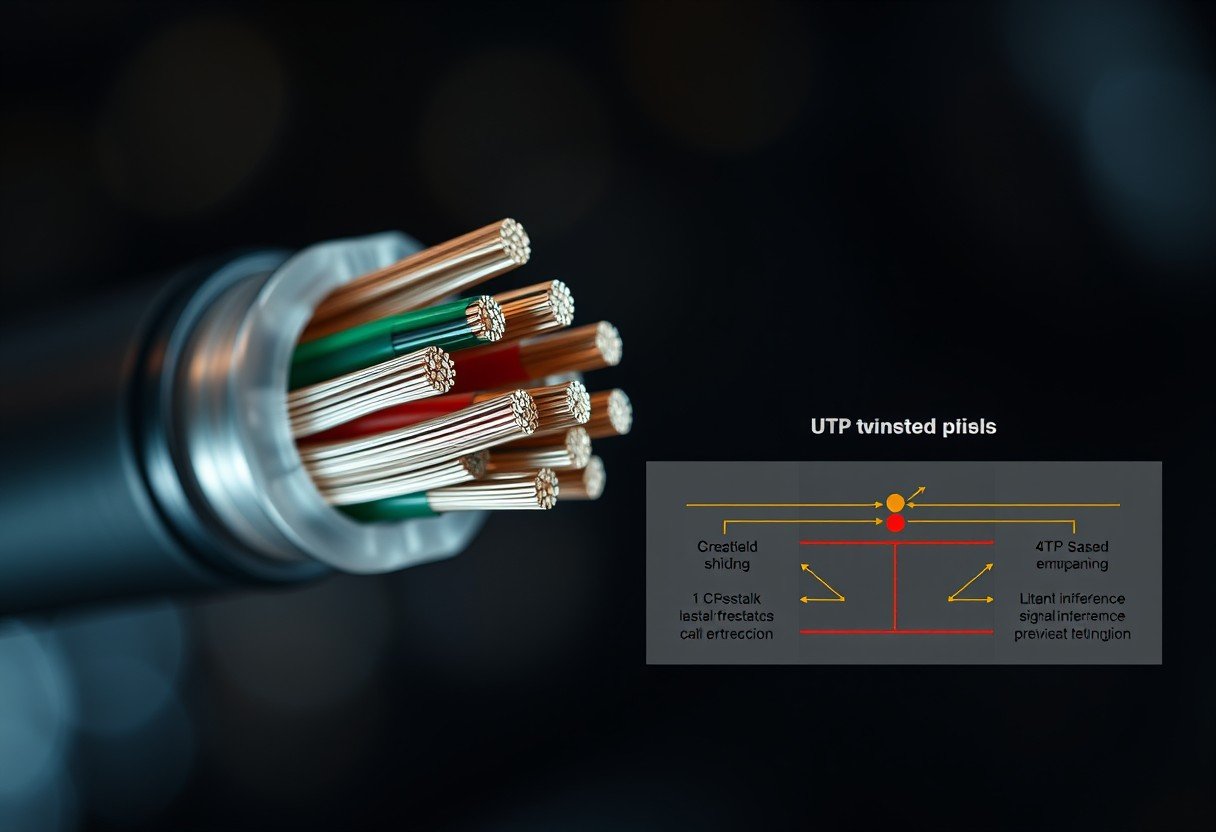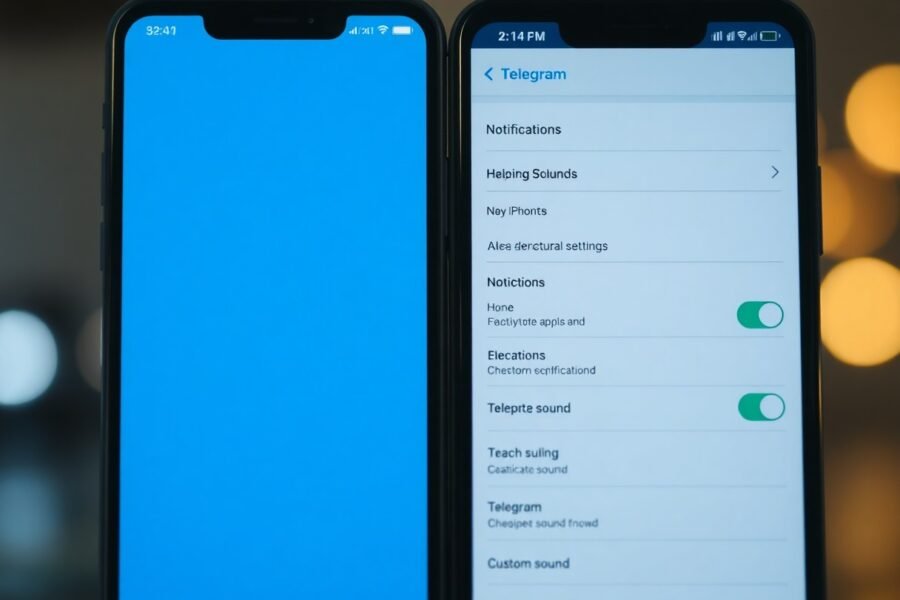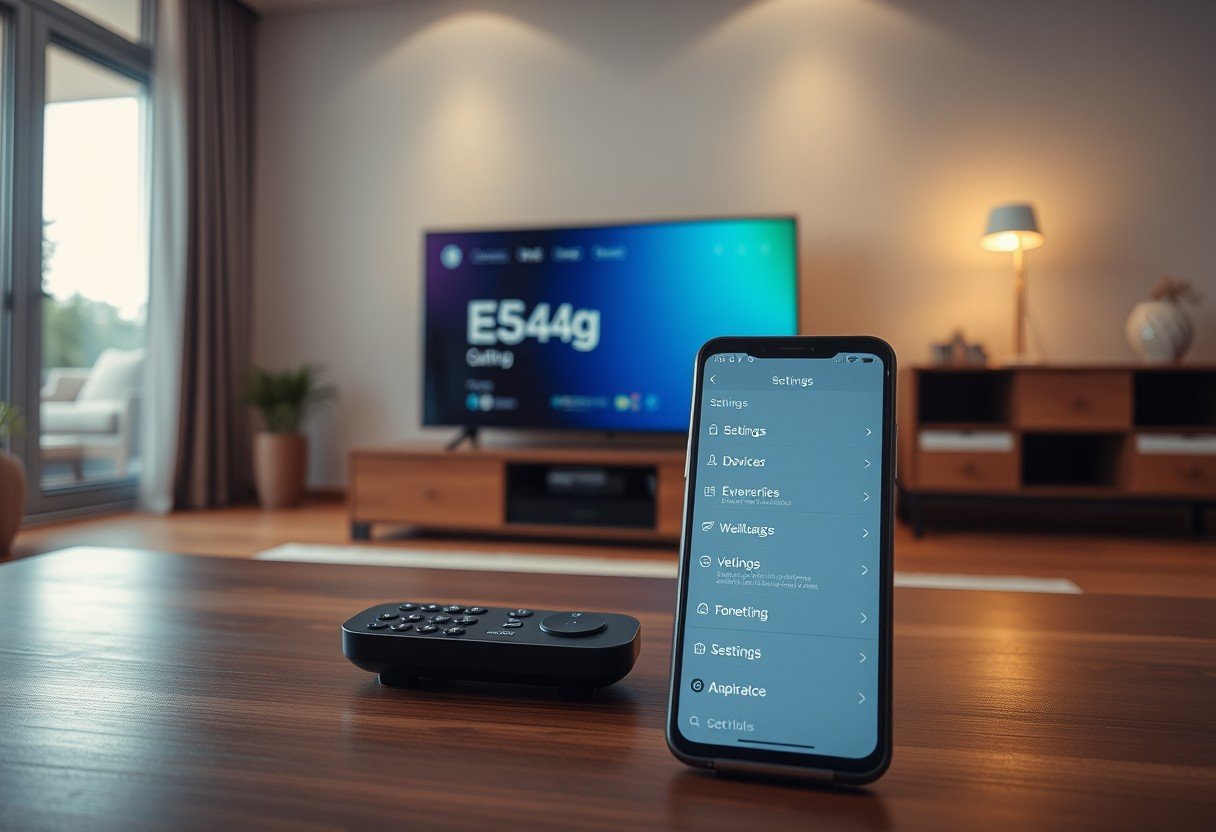If you’ve ever experienced slow network speeds or unreliable connections, a hidden culprit called crosstalk could be to blame. This signal interference happens within network cables, disrupting data flow. The primary technique used to protect Unshielded Twisted Pair (UTP) cables from this issue is remarkably simple yet effective: twisting the pairs of wires together. This design cleverly cancels out interference, ensuring your data arrives intact and your network runs smoothly.
What is Crosstalk in UTP Cables?
Crosstalk is the unwanted transfer of signals from one wire to a nearby wire. Think of it as a conversation in one phone line bleeding into another. In networking, this “bleeding” corrupts the data signals, leading to errors and forcing the system to re-send information, which slows everything down.
This interference is a form of electromagnetic interference (EMI) generated by the signals traveling through the wires themselves. When wires run parallel to each other, their magnetic fields can induce a signal in the adjacent wires, causing a jumbled mess.
In UTP cables, crosstalk is a significant concern because they lack a metallic shield for protection. The entire defense against this internal noise comes from the cable’s physical design, specifically the twisted pairs.
There are several types of crosstalk that can affect your network’s performance:
- Near-End Crosstalk (NEXT): This is interference measured at the same end of the cable as the transmitter. It’s often the strongest and most problematic type of crosstalk.
- Far-End Crosstalk (FEXT): This interference is measured at the receiving end of the cable, far from the transmitter. It’s generally weaker than NEXT because the signal weakens (attenuates) over the length of the cable.
- Alien Crosstalk: This type of crosstalk comes from other cables located in the same bundle or conduit. It becomes a major issue in high-density installations with many cables running close together.
The Science behind the Twisted Pair Design
The twisting of wires in a UTP cable is not just for organization; it’s a precise engineering solution based on a principle called cancellation. Each pair in the cable carries one signal, with one wire carrying a positive (+) signal and the other carrying a negative (-) signal of the same data.
Because the wires are twisted together, they are equally exposed to any outside interference source, like a signal from a neighboring wire pair. When an external signal hits the pair, it induces noise equally on both the positive and negative wires.
At the receiving end, the equipment looks at the difference between the two wires. Since the noise was added equally to both, it gets canceled out when the difference is calculated, leaving only the original, clean signal. This cancellation effect is the core reason why twisting wires is so effective at preventing crosstalk.
How Different Twist Rates Improve Performance
If you were to open up a modern UTP cable, you would notice something interesting. Each of the four wire pairs is twisted at a slightly different rate. One pair might have two twists per inch, while another has three. This is not a manufacturing defect; it’s a deliberate design choice to further combat crosstalk.
Varying the twist rate for each pair prevents the wires from running parallel to each other for any significant distance. If two pairs had the same twist rate, their wires would align consistently along the cable’s length, increasing the chance for their magnetic fields to interfere with each other.
By using different twist rates, manufacturers ensure that the position of any one wire relative to a wire in another pair is constantly changing. This randomness prevents signals from consistently coupling between pairs, dramatically reducing interference and improving the overall signal integrity of the cable.
Does Cable Category Matter for Crosstalk Protection?
Yes, the category of the UTP cable plays a huge role in its ability to handle crosstalk. Higher-category cables, like Cat 6 and Cat 6a, are designed for higher speeds and frequencies, where crosstalk is a much bigger problem.
To meet these stricter performance standards, higher-category cables feature more twists per inch in their wire pairs. The tighter twists provide better signal cancellation, making the cable more resilient to both internal and alien crosstalk. Some Cat 6 cables even include a plastic spine, called a spline, that physically separates the pairs to further reduce interference.
The table below shows a simple comparison:
| Cable Category | Typical Bandwidth | Crosstalk Protection |
| Cat 5e | Up to 100 MHz | Good |
| Cat 6 | Up to 250 MHz | Better (Tighter Twists) |
| Cat 6a | Up to 500 MHz | Best (Tighter Twists, Better Design) |
Choosing the right category for your network is essential. For a basic home network, Cat 5e may be sufficient, but for a business or a high-demand environment, Cat 6 or Cat 6a is recommended for reliable performance.
Why Proper Installation is Crucial for Minimizing Crosstalk
Even the highest quality cable can perform poorly if it’s not installed correctly. The effectiveness of the twisted pair design depends heavily on maintaining the integrity of the twists all the way to the connection point.
When terminating a cable into a jack or connector, it’s critical to keep the wires twisted as close to the termination point as possible. According to industry standards, you should not untwist the pairs more than half an inch (1.27 cm). Untwisting the wires more than this creates a section where the wires run parallel, making them highly susceptible to crosstalk right at the connector.
Other installation mistakes, such as exceeding the cable’s bend radius, cinching cable ties too tightly, or running data cables parallel to high-voltage electrical wires, can also degrade performance and increase interference. Following best practices ensures the cable’s built-in protections work as intended.
Frequently Asked Questions about UTP Cable Crosstalk
What is the main reason for twisting wires in a network cable?
The primary reason is to cancel out electromagnetic interference (EMI) from both external sources and from other wire pairs within the cable. This cancellation helps protect the data signal from corruption, ensuring better network performance.
Can crosstalk be completely eliminated in UTP cables?
While the twisted pair design significantly reduces crosstalk, it cannot be eliminated entirely. However, by using high-quality, properly installed cables of the appropriate category, crosstalk can be minimized to a level where it does not impact network performance.
Does a longer UTP cable have more crosstalk?
Generally, yes. While the signal itself weakens over distance (attenuation), the cumulative effect of crosstalk can become more problematic in longer cable runs. This is why it’s important to adhere to the maximum length standards for Ethernet cables, which is typically 100 meters (328 feet).
How do I know if crosstalk is affecting my network performance?
Symptoms of excessive crosstalk include slow data transfer speeds, frequent connection drops, and a high number of data errors. Professional network cable testers can perform tests to measure the exact amount of crosstalk (like NEXT and FEXT) in a cable run to diagnose the issue accurately.
Are more twists per inch always better in a UTP cable?
Yes, a higher number of twists per inch generally provides better protection against crosstalk. This is why higher-category cables like Cat 6 and Cat 6a have tighter twists than older cables like Cat 5e, allowing them to support higher data rates reliably.








Leave a Comment